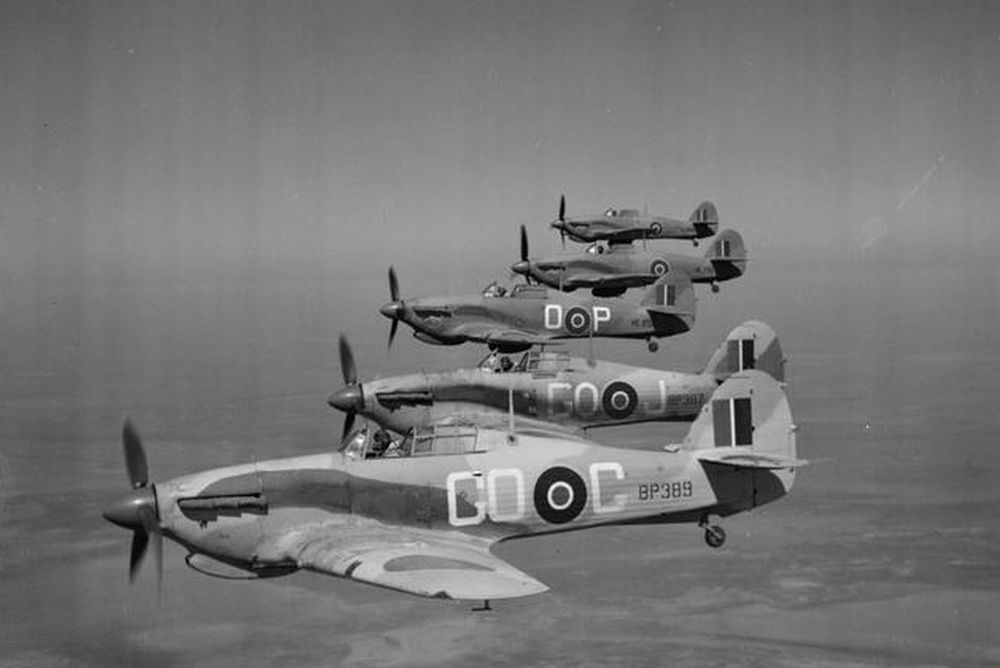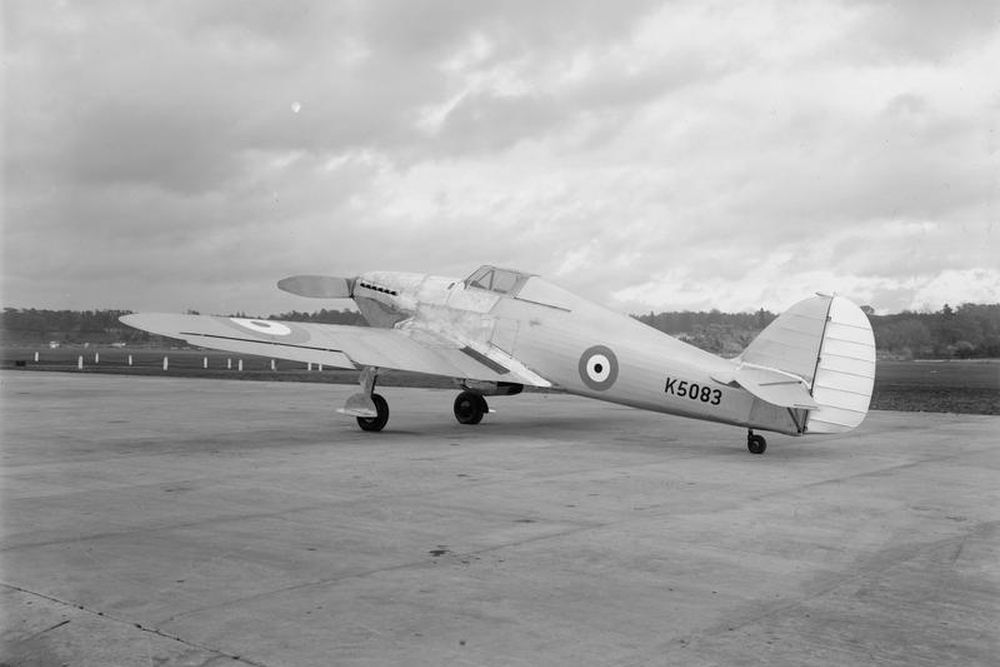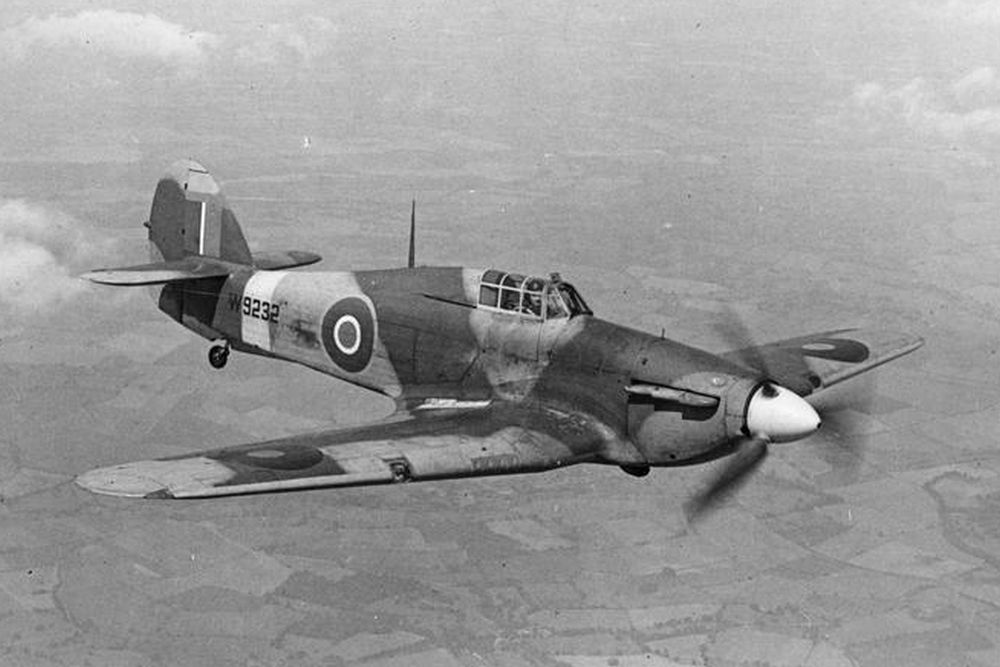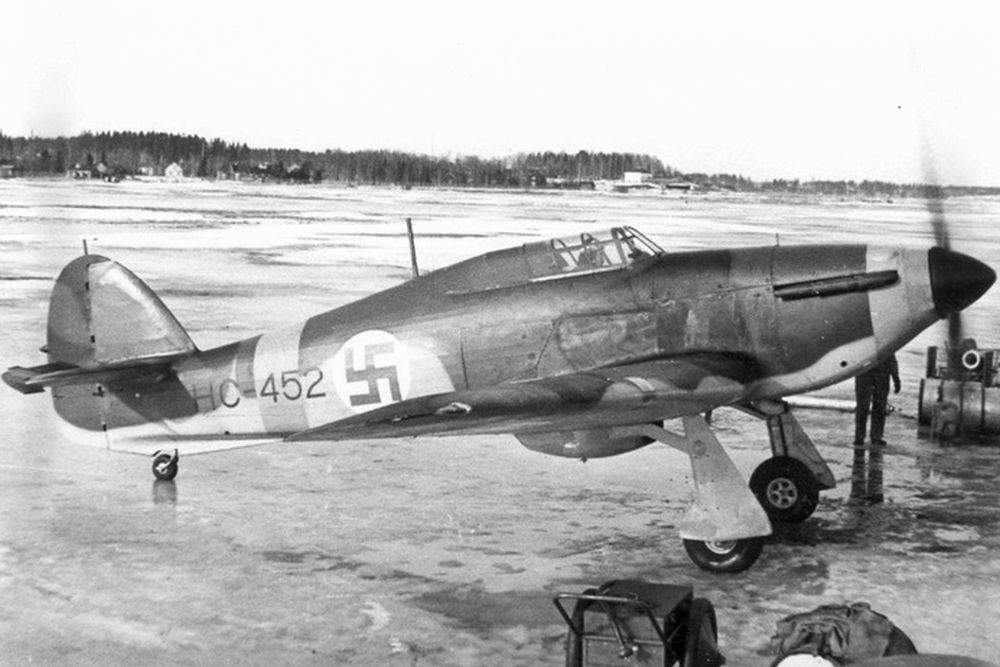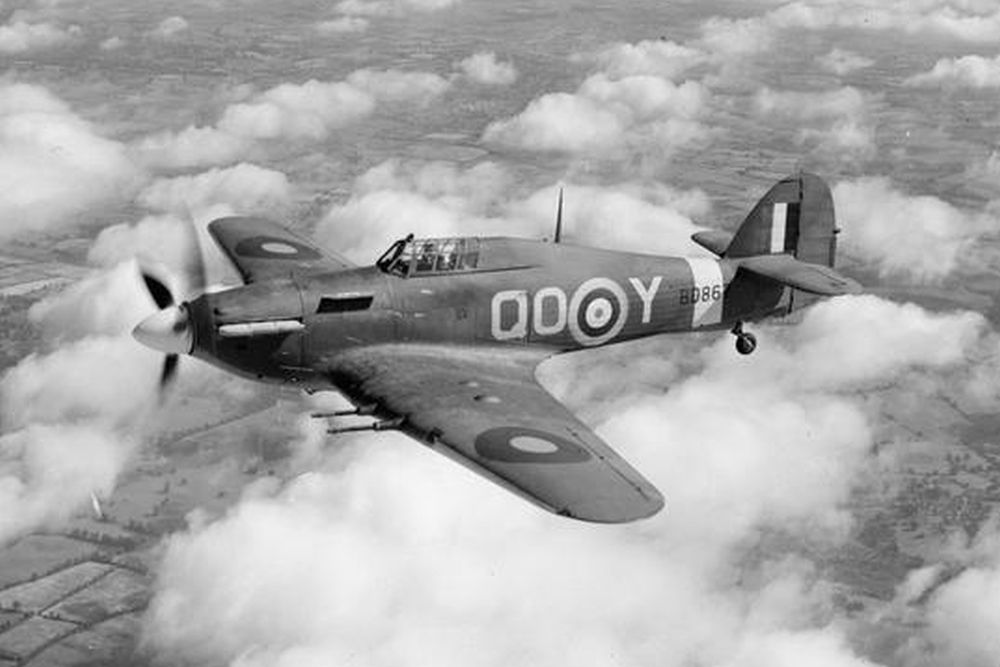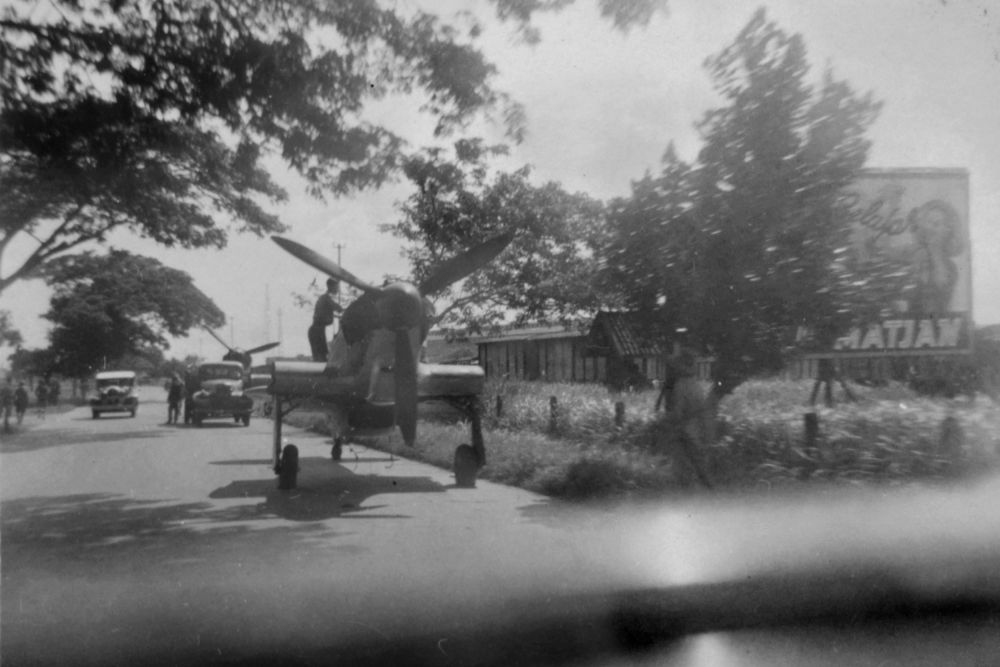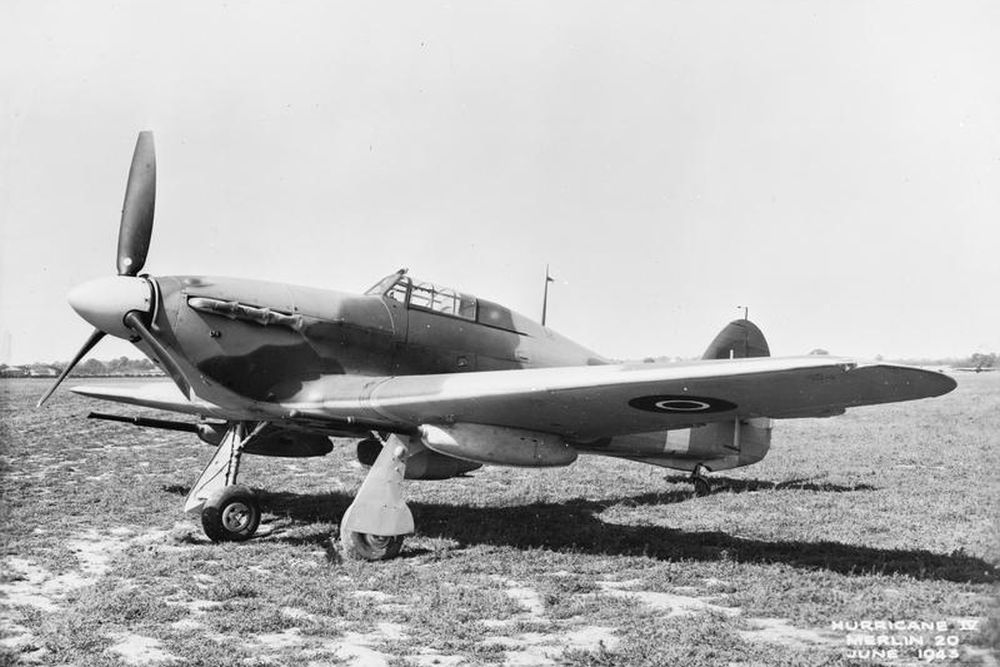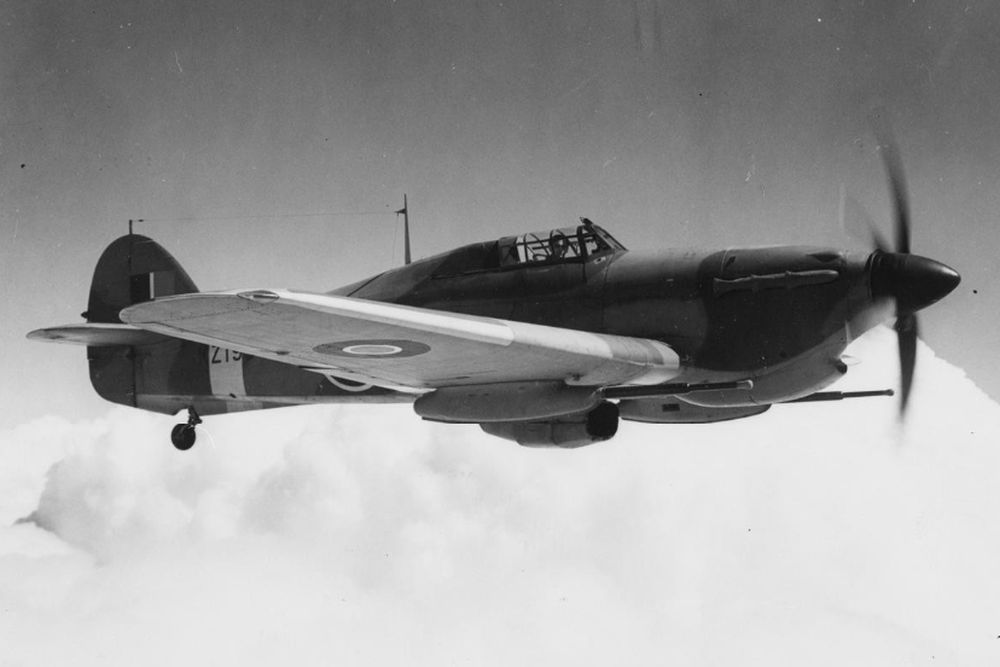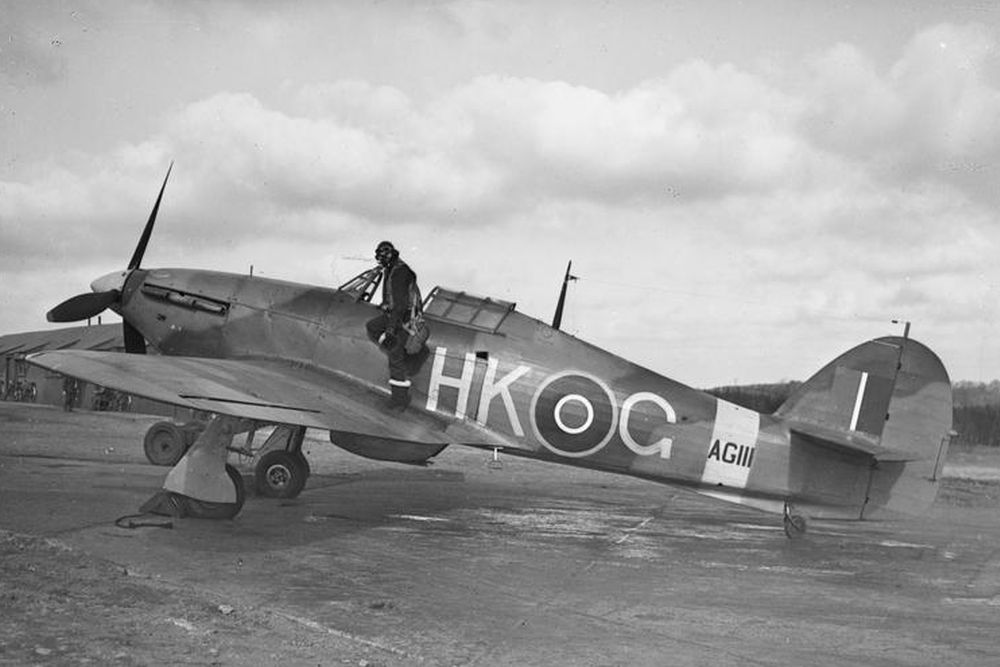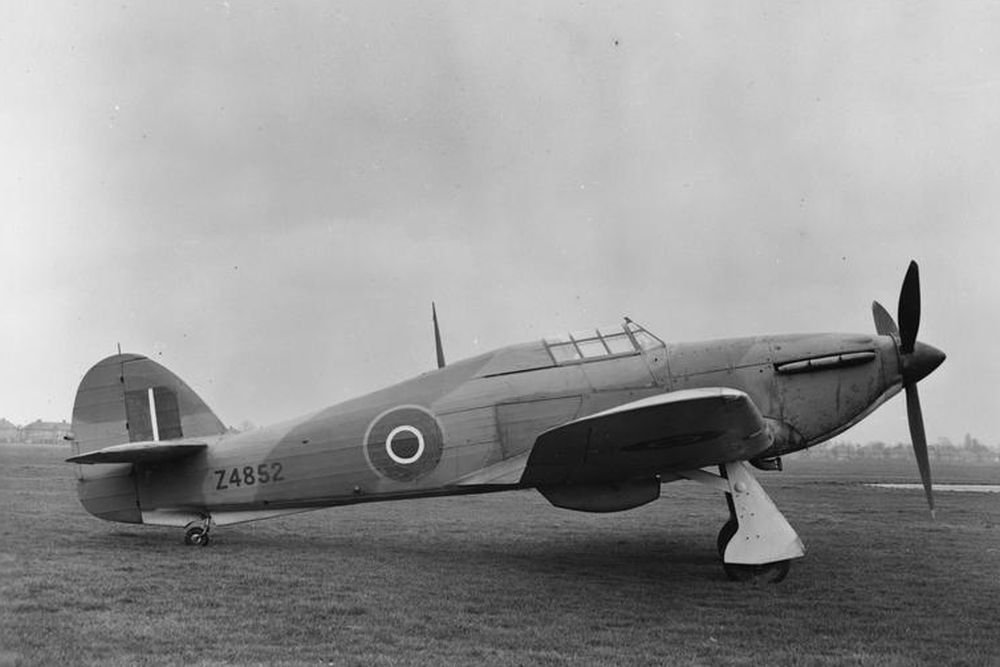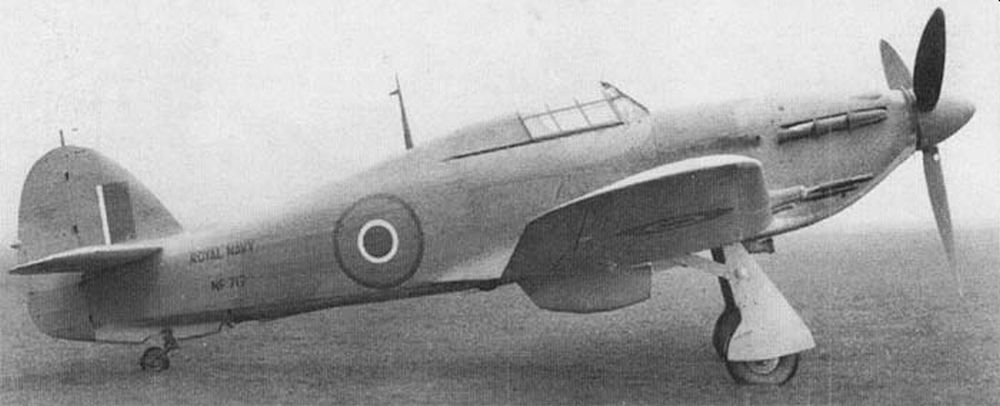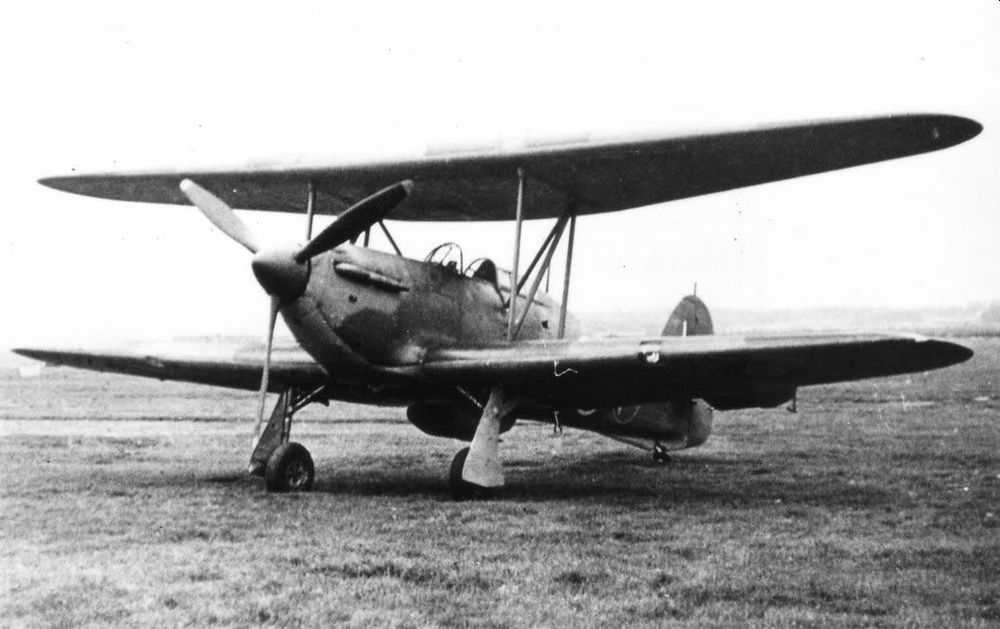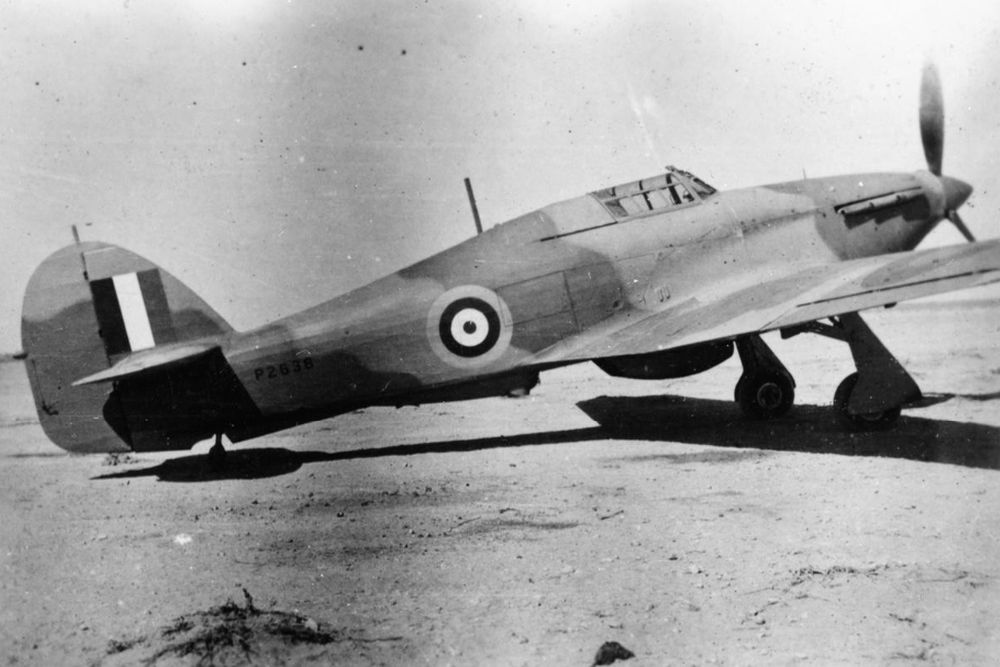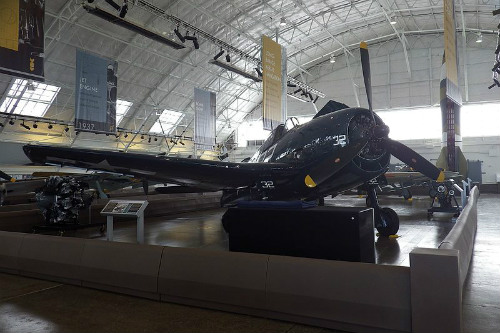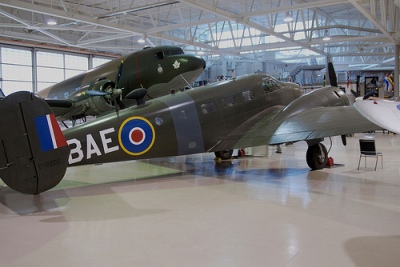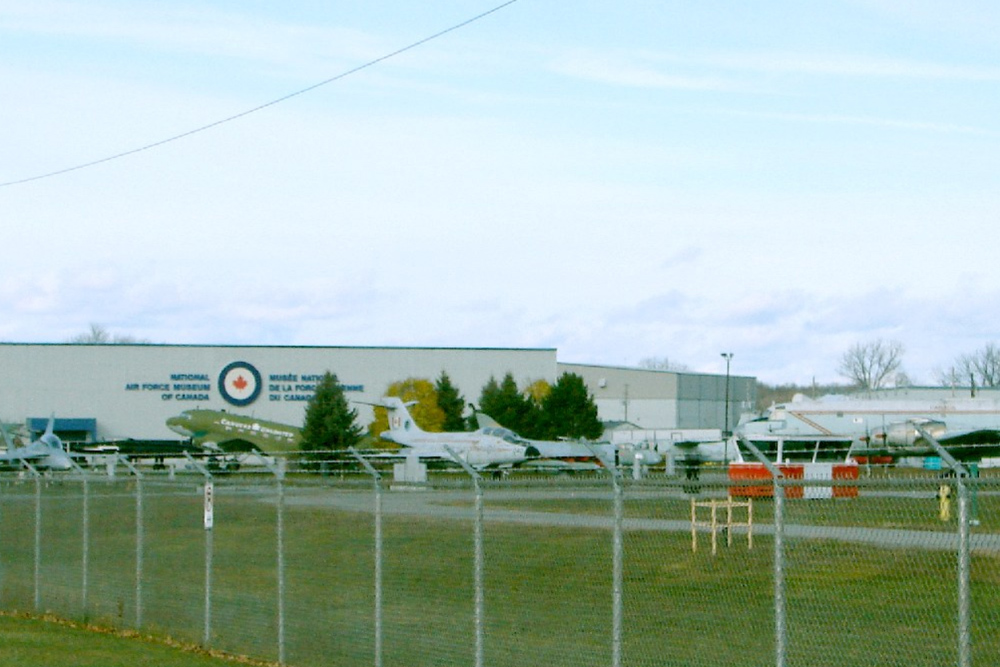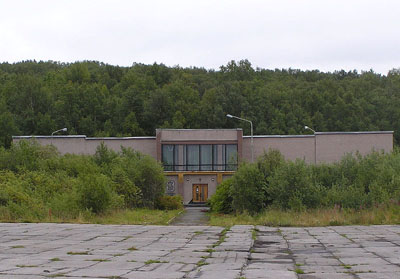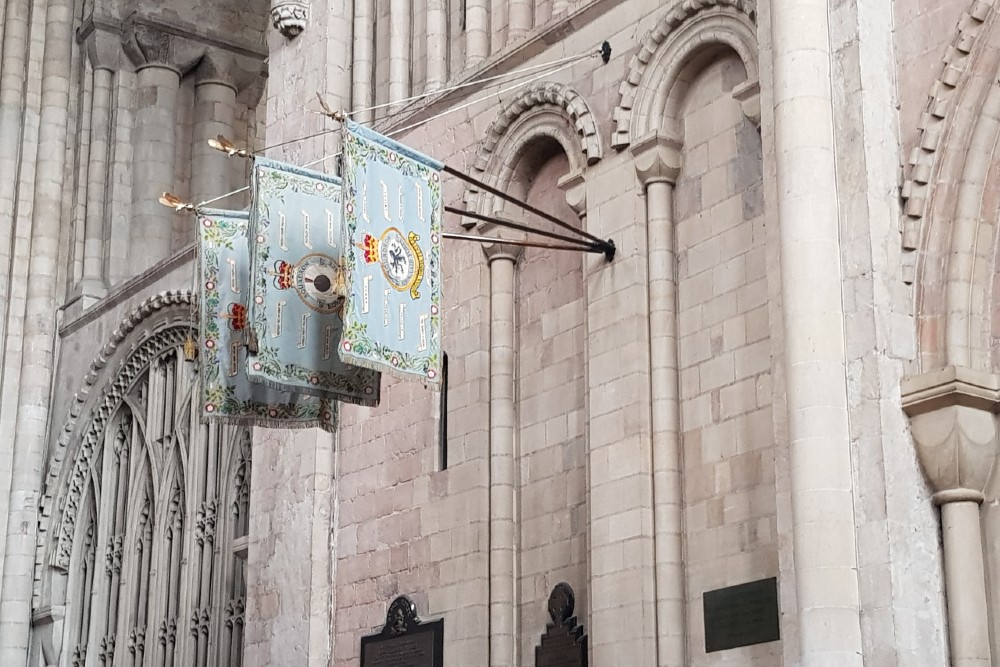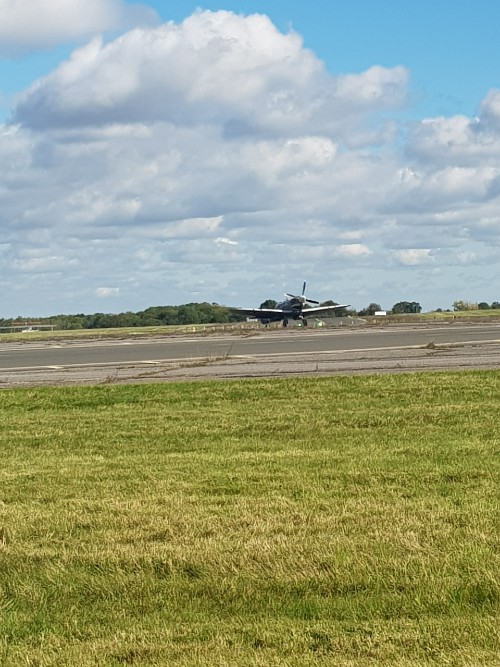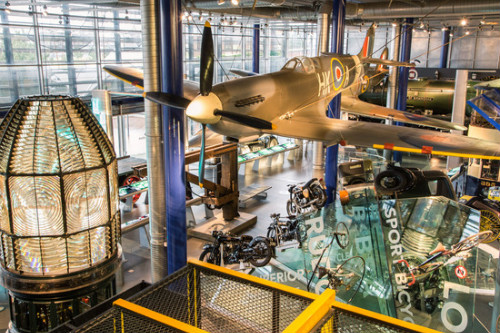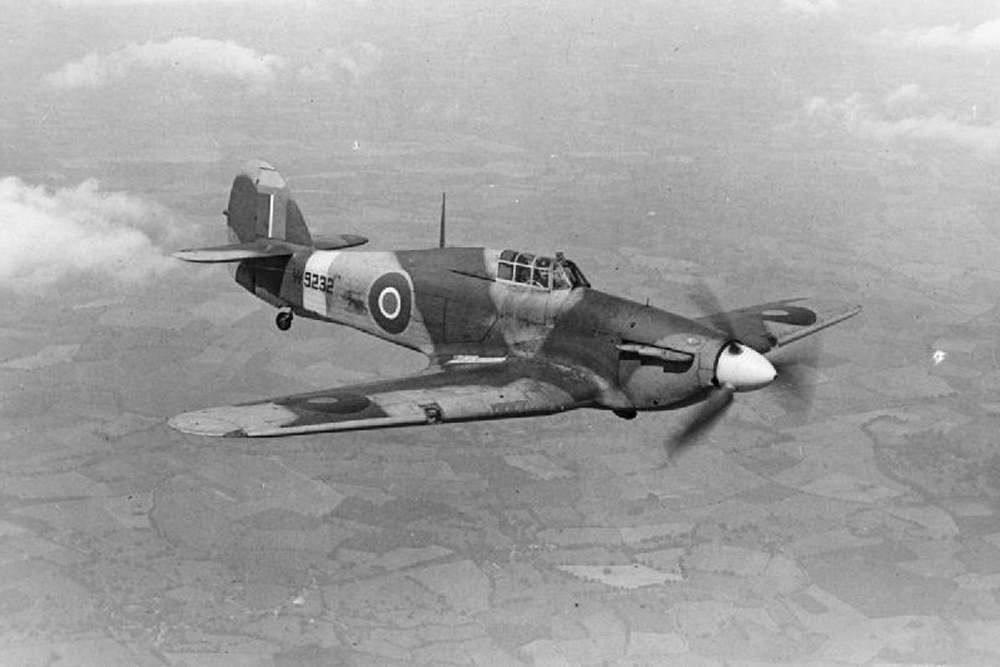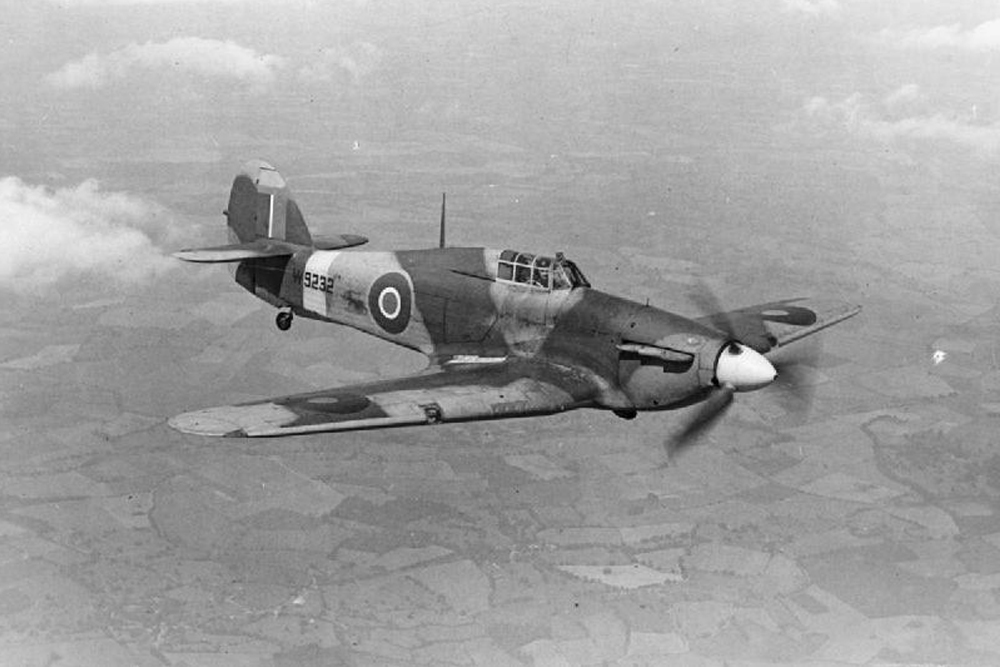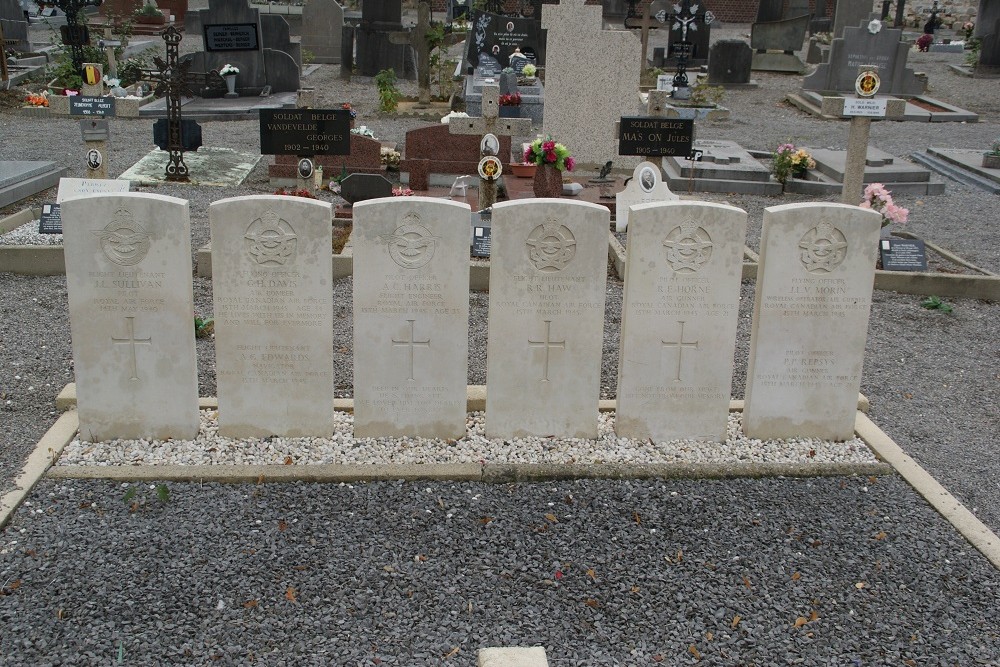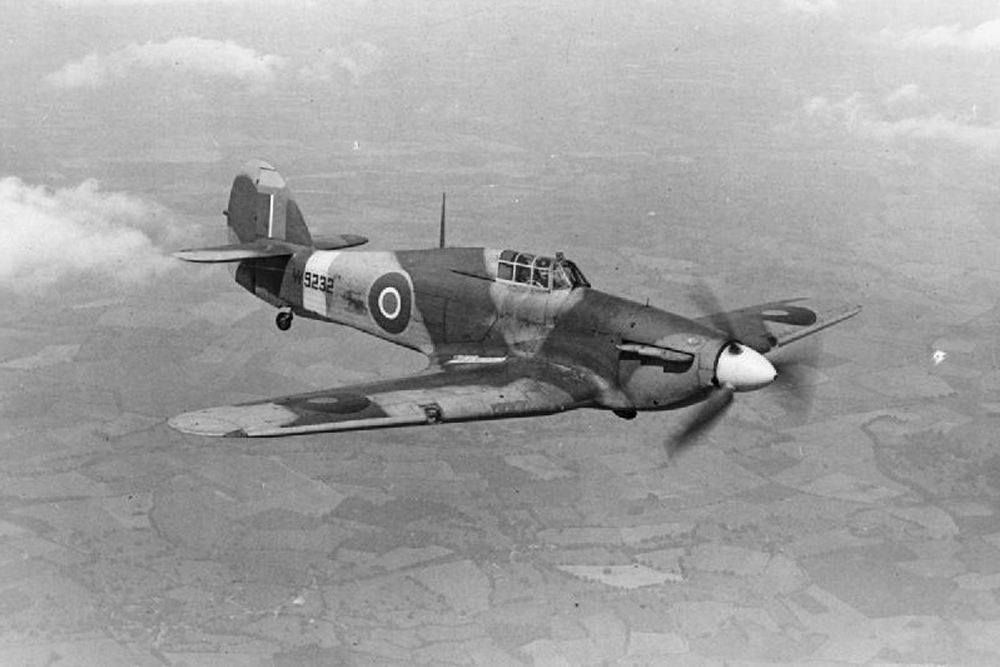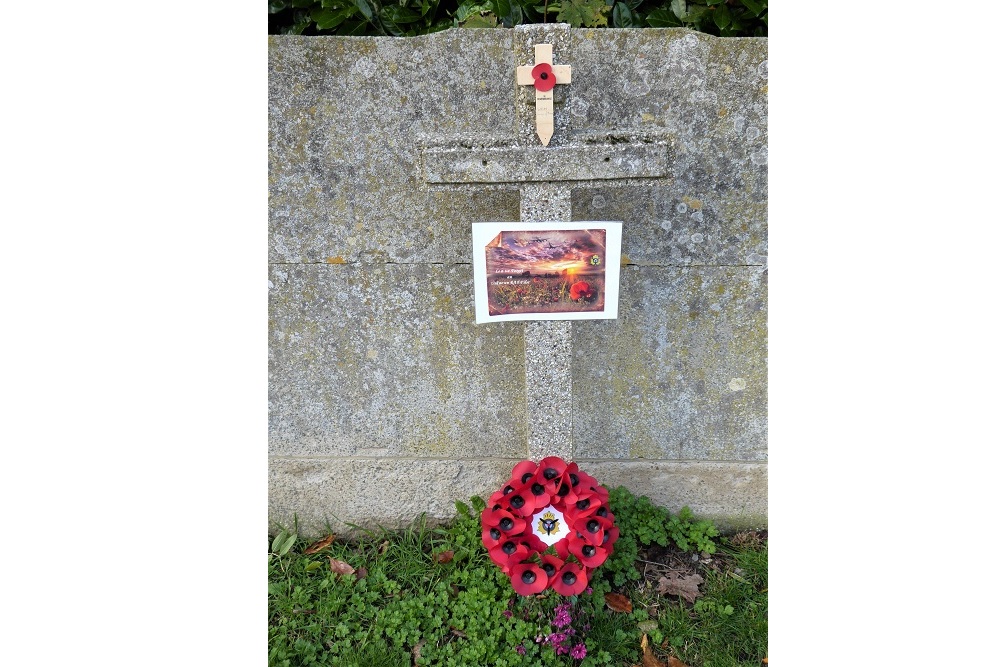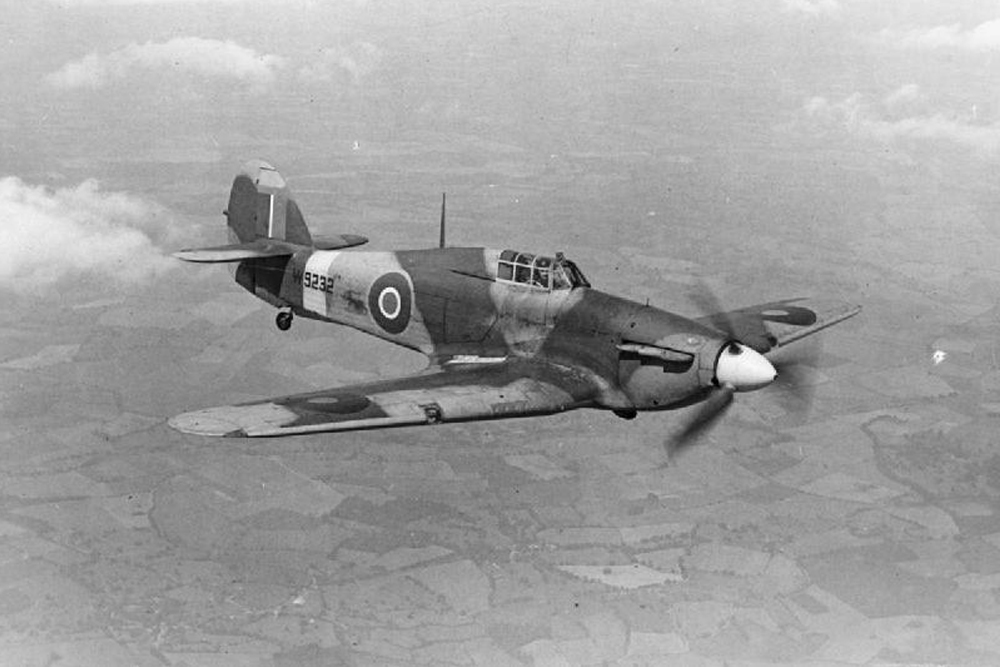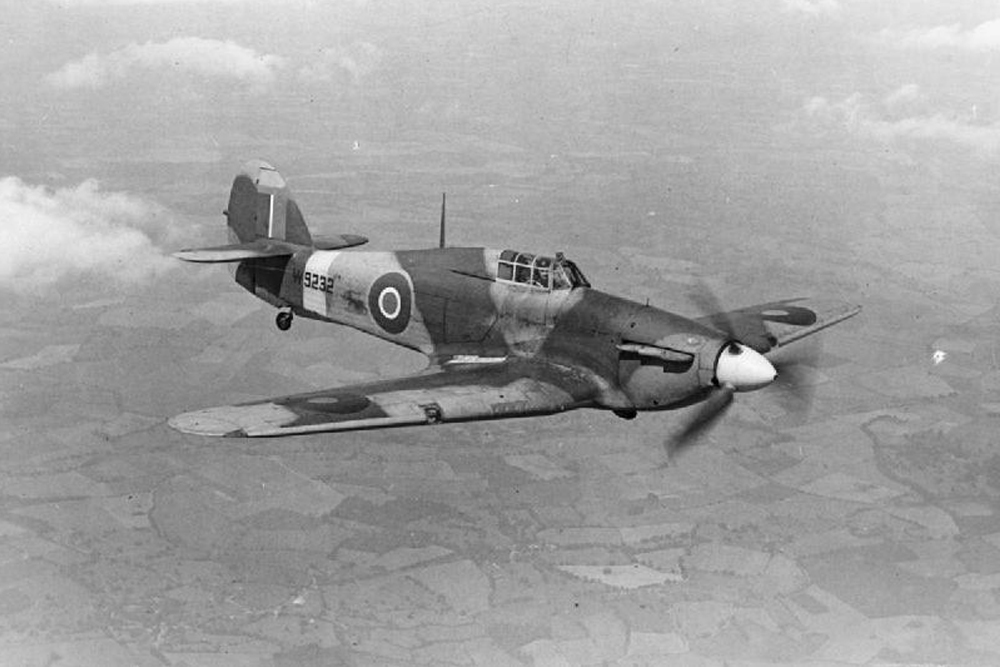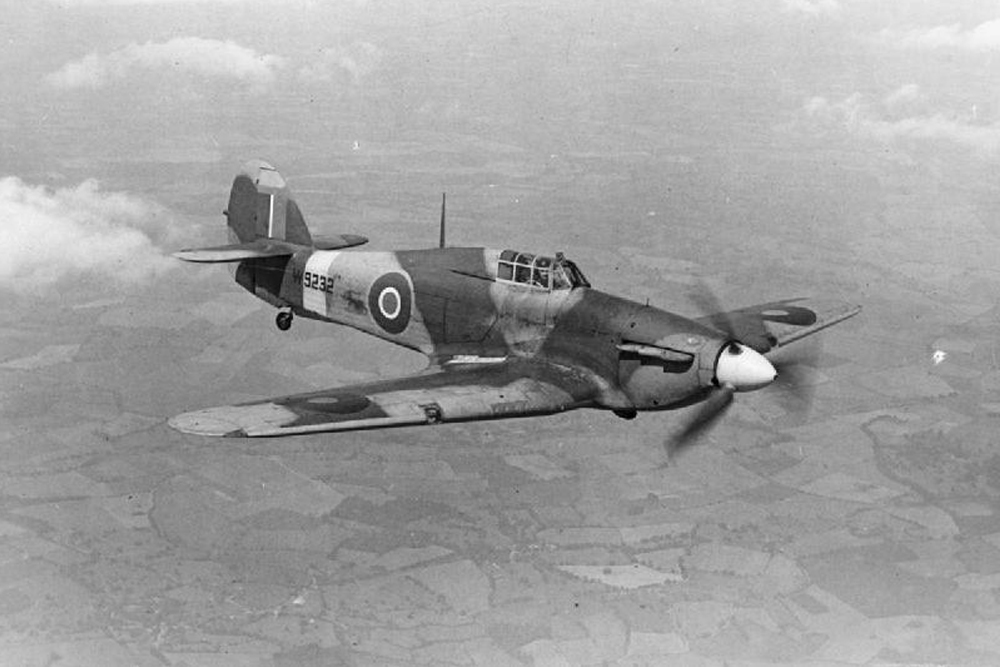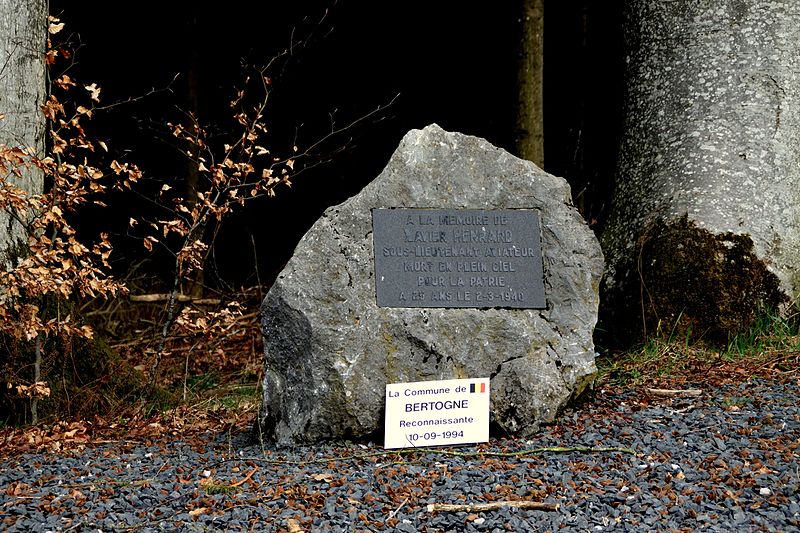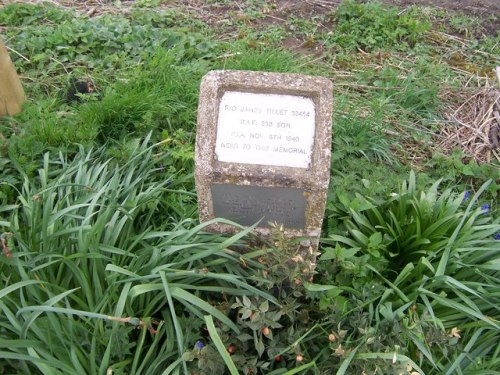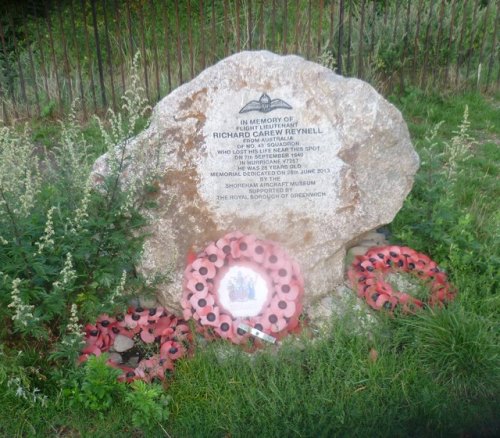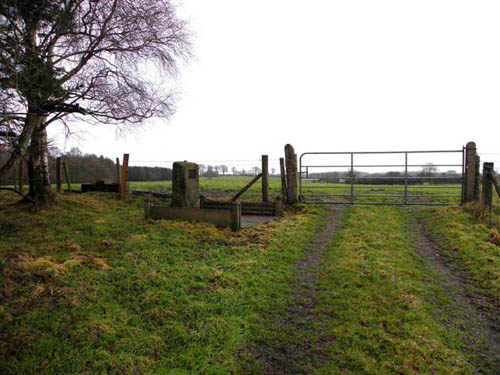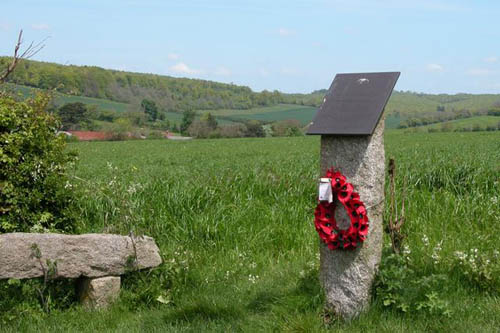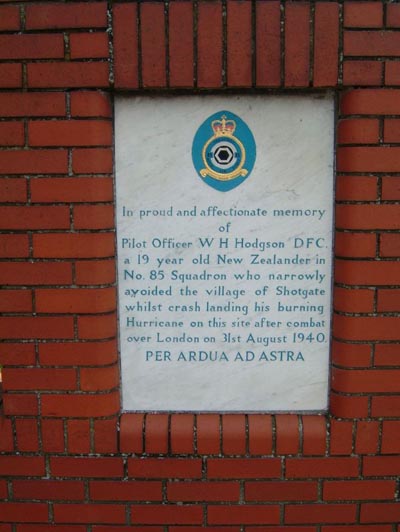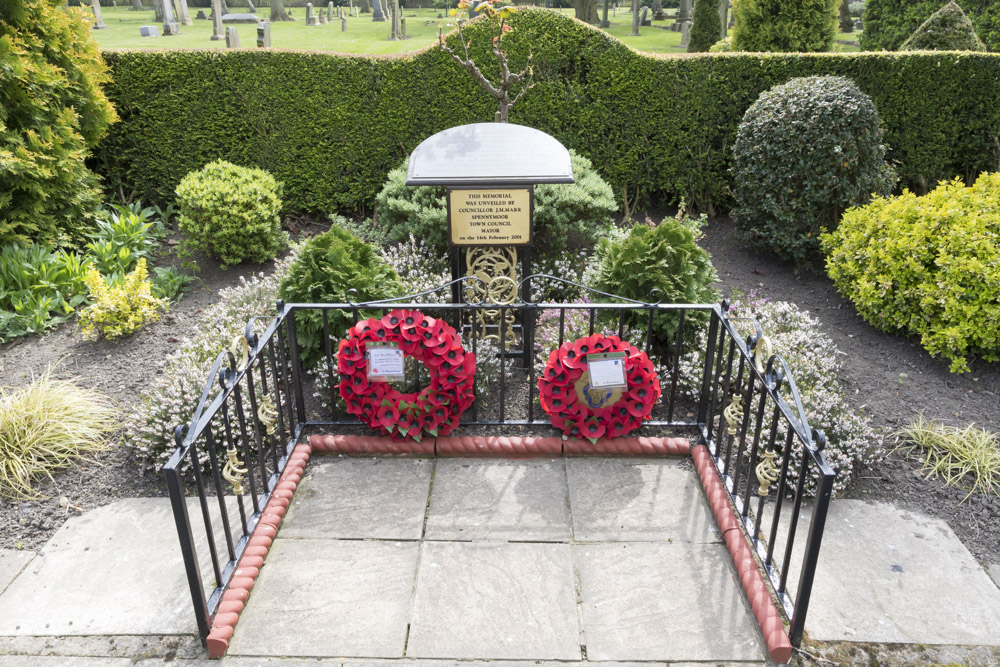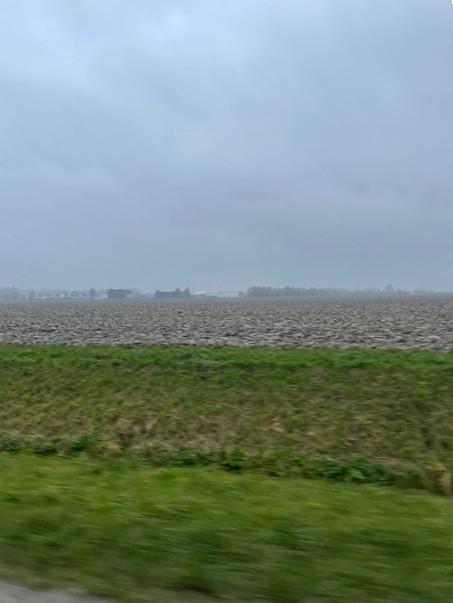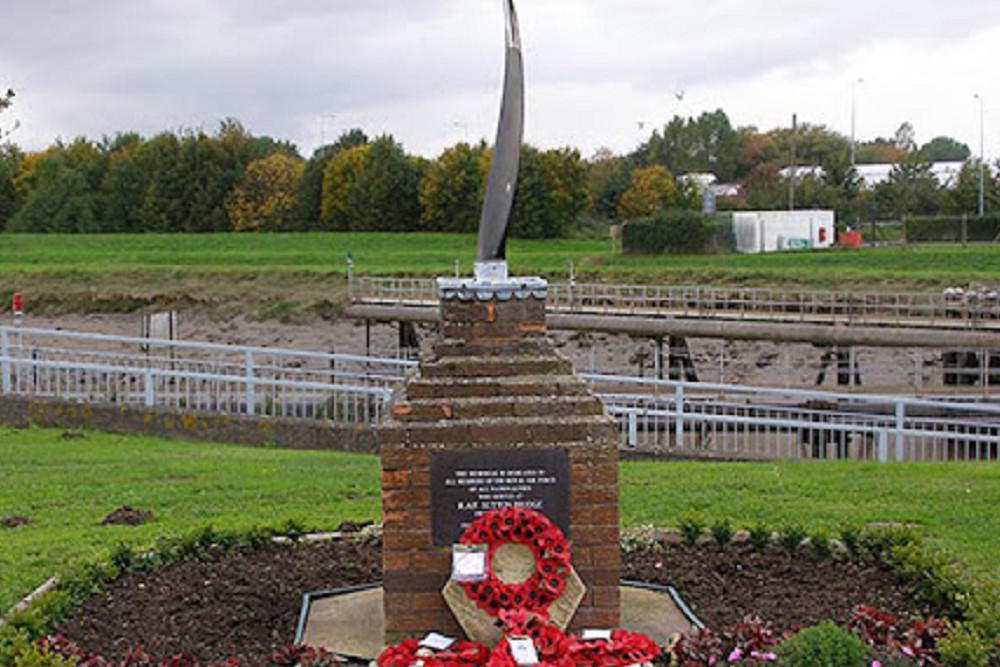Introduction
The British victory after the Battle of Britain is usually attributed to the legendary Supermarine Spitfire. Honesty compels to mention though that during this battle, the majority of the RAF squadrons hadn't been equipped with the Spitfire yet but with the Hawker Hurricane. In the course of the battle, Hurricanes have downed more enemy aircraft than all other types combined. Whereas the Spitfire took on the German fighters, the Hurricanes often created carnage among German bombers. This successful airplane, of which over 15,000 have been delivered between 1937 and 1944, saw action on almost all battlegrounds of WW2. The success of the Hurricane cannot entirely be attributed to its speed, it was too slow actually, but mostly to its capability to endure severe damage and its great maneuverability.
Definitielijst
- RAF
- Royal Air Force. British air force
Development
Around 1934 Hawker was hard at work, led by designer Sydney Camm, drafting a successor to the standard fighter of the day, the Hawker Fury. The starting point was a low-decker version. In the fall of 1934, the attention of the Air Ministry had been drawn sufficiently for it to grant permission for the construction of a prototype according to specification F./36/34.
The design of the Hurricane originated from a project of a new Hawker fighter. This was to be a monoplane, constructed around the 660hp Rolls Royce Goshawk engine. The Hurricane consisted of a linen covered frame. Initially the wings were covered with fabric as well. The selected armament was the American Colt/Browning 7.62mm machinegun built under license which was upgraded to 7.7mm after a redesign. This armament was far more reliable than the heavier but often jamming standard Vickers machineguns of the RAF. The design was equipped with no less than eight of these guns, four per wing.
K5083 made its maiden flight on November 6, 1935. As a powerplant, the 990hp Rolls Royce Merlin C engine driving a twin bladed propellor was selected for the moment. Test flying commenced in February 1936 and soon, all expectations were exceeded. On February 7, 1936, the prototype was handed over to the Air Ministry for testing. Initially, this was conducted unarmed but from August 1936 on, the aircraft was tested fully armed. The aircraft performed beyond all expectations, despite the numerous problems with the engine.
The Ministry was long in making the decision whether or not to start up production. Hawker couldn't wait for this actually and in January 1936, it took the decision to construct 1,000 aircraft at its own risk, if need be. In April however, the test results were published and the Air Ministry immediately placed an order of 600 aircraft, up till then the largest order in British military history.
Overview of types
| Hurricane Mk I | 1st version RR Merlin II or III | 4200 |
| Hurricane Mk I | revised, other prop | ? |
| Hurricane Mk I Canada | RR Merlin III | 40 |
| Hurricane Mk II | 2nd version RR Merlin XX | 8406 |
| Hurricane Mk III | planned Packard Merlin | 0 |
| Hurricane Mk IV | 3rd version RR 24/27 | 794 |
| Hurricane Mk V | test RR Merlin 32 | 2 |
| Hurricane Mk X | series P Merlin 28 | 489 |
| Hurricane Mk XI | built with CDN parts only | 150 |
| Hurricane Mk XII | CDN built. P Merlin 29 | 398 |
| Sea Hurricane Mk I | naval version Mk I | ? |
| Sea Hurricane Mk II | naval version Mk II | ? |
| Sea Hurricane Mk XII | naval version Mk XII | ? |
| H Holland Standard | Canadian built# | 400 |
| Hillson FH.40 | test plane 2nd wing | 1 |
| Hurricane PR I | converted Mk I | 10 |
| Hurricane PR II | converted Mk II | 18? |
| Hurricane Tac R | unarmed tactical recon | ? |
#: for ML/KNIL and China, Delivered as resp. RCAF Mk XII (250) and RAF Mk II (150)
Hurricane Mk I
| Hurricane Mk I | 1st version RR Merlin II or III | 4200 |
| Hurricane Mk I | revised, other air screw | ? |
| Hurricane Mk I Canada | RR Merlin III | 40 |
Definitielijst
- Browning
- American weapon’s designer. Famous guns are the .30’’ and .50’’ machine guns and the famous “High Power” 9 mm pistol.
- KNIL
- “Koninklijk Nederlands-Indisch Leger” meaning “Royal Netherlands East Indies Army” (1830-1950). Name of the Dutch army in the Netherlands East Indies.
- RAF
- Royal Air Force. British air force
Hurricane Mk I
On October 12, 1937, the first Hurricane Mk I took to the air and in December 1937, No. 111 Squadron enjoyed the honor to be the first operational Hurricane squadron. The first production model had been fitted with the necessary adaptions compared to the prototype. The canopy had been strengthened as some problems with sealing had been discovered, furthermore some minor changes had been applied.
Over the following months Nos 3 and 56 squadrons were equipped and towards July 1940, 26 Hurricane squadrons were operational and 32 in August. When Germany invaded Poland in September 1939, production was in full swing, in various factories and even distributed over two continents. A production line had been set up in Canada as well. At that moment, some 500 Hurries served in 18 squadrons.
The Mk I was powered by a Rolls Royce Merlin II or III with a twin-blade, wooden Watts or a triple-blade metal De Havilland or Rotol air screw. As the twin-blade Watts soon proved inadequate it was replaced eventually. The plane was armed with an impressive array – for the time at least – of no less than eight Browning 7.7mm machineguns.
Prior to the outbreak of war in May 1940, Nos 1 and 37 squadron arrived in France as part of the British Expeditionary Force or BEF, followed by Nos 85 and 87 Sq. Right after the German invasion in May 1940, this number was supplemented by three additional squadrons, all equipped with Hurricanes Mk I. During Fall Gelb, the BEF lost 75 aircraft in combat and after the evacuation from Dunkirk, it had to leave another 120 damaged aircraft behind. This was a quarter of the total strength of British fighters.
The simple construction of the Hurricane made it possible to send the Mk I to the Mediterranean and North-Africa as early as the fall of 1940. No. 261 Squadron on Malta and Nos. 73 and 274 in Egypt were the first to receive them. To this end, the aircraft were fitted with an additional pimple-like air filter under the nose.
In 1939, 20 aircraft were sent to Canada, 7 to South-Africa, 20 to Belgium which built 2 under license out of a total of 80, 2 to Persia (Iraq), 1 to Poland, 12 to Romania, 15 to Turkey, 24 to Yugoslavia which built another 20 under license and in 1940 12 to Finland. These planes were collected in England by their own pilots. After initial service in LeLv24, the aircraft were transferred to LeLv32 as a unit. The Belgian Hurricanes were allocated to the first group of the 2nd Air Regiment (2/1/2Ae). Stationed on Schaffen air base, most of them were destroyed on the ground during an attack on the base. Only one managed to take to the air and was downed later. The Yugoslav aircraft, together with the Yugoslav Messerschmitts Bf-109 made up the air force of the country after the German invasion. Yugoslavia had bought the license in 1940 and started producing aircraft itself. At the time of the German invasion in 1941, 38 aircraft were operational. The South-African Hurries ended up in Nr. 1 SAAF Squadron but were never deployed in operations.
In 1938, Canada ordered 20 Hurricanes Mk I. The British government however wanted to spread production and requested Canada to produce Hurricanes herself. In order to keep the design similar, one Mk I (L1848), was sent to Canada on March 2, 1939. This aircraft formed the base for the first serial production. Initially, 40 Hurricanes Mk I were produced of which the first flew in January 1940. These aircraft were not destined for the RCAF but for the RAF. These Canadian Hurries were equipped with the Rolls Royce Merlin III with a triple-blade De Havilland air screw.
Technical data Hurricane Mk I
| Task | Fighter |
| Crew | 1 |
| Wingspan | 40ft |
| Wingsurf | 27.4 sq yards |
| Length | 31.5ft |
| Height | 13ft |
| Weight | Empty 4982, max 6532lbs |
| Engine | RR Merlin II or III |
| Speed max/cruise | 324/272mph |
| Range | 413 miles |
| Ceiling | 34,200ft |
| Armament | Eight 7.7mm Browning |
| Production | 4,200 |
Definitielijst
- Browning
- American weapon’s designer. Famous guns are the .30’’ and .50’’ machine guns and the famous “High Power” 9 mm pistol.
- invasion
- Armed incursion.
- RAF
- Royal Air Force. British air force
- Regiment
- Part of a division. A division divided into a number of regiments. In the army traditionally the name of the major organised unit of one type of weapon.
- Squadron
- A military unit in the Belgian navy usually six to eight small ships operating together under one command. The smallest military unit in the Dutch air force of about 350 men. In most countries is the designation of a military unit thesize of a company. It is either an independent unit, such as a battery, or part of a bigger Calvary unit. In the air force it is the designation of a unit of aircrafts.
Hurricane Mk II
In the summer of 1939, Rolls Royce produced a more powerful Merlin, the XX of 1185hp. This became the standard engine for the next Hurricane version, the Mk II. Just like the Spitfire, at this moment various versions based on armament came into being.
A version: With the usual armament of eight 7.7mm Browning guns, this version was designated from this moment on as Hurricane Mk IIA.
B version: This aircraft, equipped with the formidable number of 12 machineguns, was designated the Mk IIB.
C version: The Mk IIC was equipped with 4 20mm Hispano-Suiza guns.
D version: The Hurricane Mk IID was armed with two machineguns and two 40mm cannon. Later in the war, the possibility was created in the Mk IIB and C to carry 8 3" rockets. These were designated as Mk IIE sometimes.
Technical data Mk II
| Type | Hurricane MkII |
| Task | Fighter |
| Crew | 1 |
| Wingspan | 40ft |
| Wingsurf | 28.6 sq yard |
| Length | 32ft |
| Height | 13ft |
| Weight IIA | 5500/7101lbs |
| IIB | 5467/7233lbs |
| IIC | 5657/8045lbs |
| Engine | 1 RR MerlinXX 1460hp |
| Speed IIB | max 328/177mph |
| IIC | max 327/177mph |
| Range | 465/935 miles |
| Ceiling | 36,000 (IIB) 34,500 |
| Armament IIA | Eight 7.7mm Browning machineguns |
| IIB | Twelve 7.7mm Browning machineguns |
| IIC | Four 20mm Hispano guns |
| IID | Two 40mm AT guns beneath/two 7.7 MGs in the wings |
| IIB/C | 2 bombs 250/500 lbs. or eight 3" rockets |
| Production IIA | 451 |
| IIB | 2948 |
| IIC | 4711 |
| IID | 296 |
In 1941, the B and C versions were converted to fighter-bombers enabling them to carry bombs or additional fuel tanks beneath the wings. As the necessary machineguns for the first versions couldn't be delivered on time, the RAF often fitted less machineguns and bomb racks beneath the wings in order to deploy them as fighter-bombers. In October 1941, these first Mk IIBs were delivered to Nos. 601, 605 and 607 Squadrons which deployed them over the English Channell. In November 1941, the first squadron in North-Africa, No. 80, was equipped with this Mk II. At about the same time, Nos. 81 and 134 Squadron were sent to the Soviet-Union to fight against the Germans. When the pilots departed, they left their planes behind to be used by the Soviets. The Hurricane Mk IID would also play a successful role in North-Africa as an anti-tank weapon - nicknamed the can opener – in which it played an important role. The last of the 12,780 Hurricanes produced was a Mk IIC in 1944.
The Mk II has been delivered to a great number of nations. Well-known are: Australia, Canada, Egypt (20), Ireland (12), Finland (1 captured), France, India (200), The Netherlands (Militaire Luchtvaart KNIL 24 (Military Aviation of the Royal Dutch Indonesian Army) 24. New-Zeeland, Persia (17), Portugal (40), South-Africa, Turkey (14) and the Soviet-Union. In 1942 a Russian Mk IIA was captured by the Finns and was put in service after repairs. In 1941, the Netherlands had ordered 12 Mk I aircraft for the Militaire Luchtvaart of the KNIL. Due to a lack of engines, these were never delivered. At the end of 1941 however, 24 Hurricanes Mk IIB, originally destined for the RAF in Singapore, were delivered on the island of Java. They were operational in February 1942. Two squadrons were established with these aircraft which probably have served in RAF colors. (pictures are unknown). The RAF markings have simply been painted over with camouflage paint and afterwards the orange triangle was added. Nothing is known about registration numbers. Accidents soon claimed two aircraft and on February 21, 1942, a number of them was attacked during landing on Kalidjati. In March 1942 , the seven remaining aircraft launched attacks on the Japanese invasion force on Java. In their Hurricanes, the Dutch managed to down 30 Japanese aircraft, losing 18 of their own.
Finally it is worth mentioning that two aircraft were delivered to the Iranian air force as Hurricane Mk T.IIC two-seat trainers.
Definitielijst
- Browning
- American weapon’s designer. Famous guns are the .30’’ and .50’’ machine guns and the famous “High Power” 9 mm pistol.
- cannon
- Also known as gun. Often used to indicate different types of artillery.
- invasion
- Armed incursion.
- KNIL
- “Koninklijk Nederlands-Indisch Leger” meaning “Royal Netherlands East Indies Army” (1830-1950). Name of the Dutch army in the Netherlands East Indies.
- RAF
- Royal Air Force. British air force
- squadron
- A military unit in the Belgian navy usually six to eight small ships operating together under one command. The smallest military unit in the Dutch air force of about 350 men. In most countries is the designation of a military unit thesize of a company. It is either an independent unit, such as a battery, or part of a bigger Calvary unit. In the air force it is the designation of a unit of aircrafts.
Hurricane Mk III, IV and V
Hurricane Mk III would have been the designation of the Mk II, equipped with an American Packard Merlin engine. This series never went into production though.
Hurricane Mk IV. In 1943 an attempt was made to implement standardization, as was the case with the Spitfire. The Mk IIE was fitted with a more powerful engine and a universal wing. The wing was constructed in such a way that either two 40mm Vickers cannon and 2 machineguns, eight rockets and two 7.7mm machineguns, two bombs and two 7.7 machineguns or two external fuel tanks and two 7.7mm machineguns could be fitted as needed. The first 270 aircraft were designated Mk IIE but soon renamed Hurricane Mk IV. A total of 794 has been produced: 270 Mk IIE, 524 Mk IV.
Technical data Mk IV
| Type | Hurricane Mk IV |
| Task | Fighter |
| Crew | 1 |
| Wingspan | 40ft |
| Wingsurf | 28.7 sq yard |
| Length | 32ft |
| Height | 13ft |
| Weight | 6151/8961lbs |
| Engine | 1 RR Merlin 24 or 27 1620hp |
| Speed | max 314/176mph |
| Ceiling | 32,000ft |
| Armament | Two 7.7 MG, Eight 3" rockets. Two 40 mm cannon |
Hawker Hurricane Mk V. The last British type Hurricane, the Mk V didn't make it past two aircraft. They were Mk IVs, test aircraft equipped with a 1600hp Merlin 32 engine.
Definitielijst
- cannon
- Also known as gun. Often used to indicate different types of artillery.
Hurricane Mk X, XI and XII
Hurricane Mk X. The first large Canadian production was designated Hurricane Mk X. These were equipped with a license-built Packard Merlin 28 engine driving a triple-blade American Hamilton air screw. Although the designation makes one think it is a sequential type, it is actually a Canadian-built Mk IIB. The Canadian Car & Foundry produced a total of 489 Mk X aircraft.
Hurricane Mk XI. The Mk XI was identical to the Mk X but constructed with parts exclusively produced in Canada. Of this type, some 150 have been built.Hurricane Mk XII. This was actually a Canadian Mk II equipped with a 1300hp Packard Merlin 29. Of these, 248 aircraft have been constructed. Furthermore, 250 versions designated Mk XIIA have been produced.
The Canadian Hurricanes ended up in both the RAF and the RCAF. By the way, most Hurricanes destined for the Canadian Air Force were delivered to Great Britain as well, although not to the RAF but to the RCAF squadrons operating from England.
Definitielijst
- RAF
- Royal Air Force. British air force
Sea Hurricane
In order to compensate for the shortage of British naval fighter aircraft, various Hurricanes were built as a naval version. It was a stop gap measure though. Due to the carnage in the Atlantic inflicted by German U-boats, the Fleet Air Arm badly needed good fighters. The Hawker Hunter was selected as a temporary solution.
The first version was a direct descendant of the Mk I From 1941 onwards, three different versions were produced. The Sea Hurricane Mk I was the first. It was a standard Mk I, adapted to be launched by catapult from so-called CAM ships, freighters equipped with a catapult. This was the first attempt to provide some protection to the Atlantic convoys. The disadvantage was that the pilot had to ditch in the ocean after his mission and hence the aircraft was lost. The Mk IB was the first Sea Hurricane entirely suitable for operations from carriers and also entered service in the course of 1941. The next year, the Mk IC followed. This was a converted Mk IB fitted with the wings of a Mk IIC with four cannon.
Sea Hurricane Mk II. Powered by a Rolls Royce Merlin XX, the Sea Hurricane Mk II was the naval version of the Mk II. In contrast to the Sea Hurricane Mk I, it could not be launched by catapult. A small number of Hurricanes Mk II were fitted with a grappling hook without being converted to naval fighter. These aircraft were mainly used to train deck landings from 1943 onwards.
Sea Hurricane Mk XII. In Canada, a number of Sea Hurricanes XIIA were developed from the Hurricane Mk XIIA. Some of these aircraft were transferred to the US Navy which deployed them during the invasion of Algeria in November 1942.
Definitielijst
- cannon
- Also known as gun. Often used to indicate different types of artillery.
- invasion
- Armed incursion.
Holland Standard Hurricane/ Hillson FH. 40
A third of the Canadian-built version was a type developed according to a specification of the Dutch ML/KNIL. In 1942, the aircraft AM270 was constructed entirely based on this specification. Powered by an American-built Merlin engine, instruments and bomb aiming device, this became the prototype for the Dutch order. It was marked HC33-287.
It is unclear what happened to the aircraft. It is known that the Canadian Car & Foundry used it for test flights. Based on this prototype, the Canadian government ordered 400 of these aircraft of which 100 were destined for the Dutch East-Indies and 300 for China. Later on, the Dutch order was downgraded to 72 and due to the developments in the Dutch East-Indies it was even canceled. The Chinese government decided to buy American aircraft instead of the Hurricanes. The 328 aircraft destined for China were offered to the Soviet Union which didn't accept them either. At the end of the day, 250 aircraft were sold to the RCAF as MK XII and 150 as Mk II to the RAF.
These aircraft, destined for the KNIL and others, must not be mistaken for the Mk II aircraft which were delivered to the KNIL before the end of hostilities in the Dutch East-Indies. These were from an emergency delivery.
Hillson HF. 40. One Hurricane Mk I, RCAF 321, RAF L1884, was equipped with a Hills & Sons bi-mono slip wing. The idea was to achieve a shorter take-off and landing. In May 1943, Taxi and flight tests were conducted on RAF Sealand. From September 1943 onwards, testing was conducted by the Aeroplane and Armament Experimental Establishment at Boscombe Down. Testing yielded insufficient results to test this experiment in practice.
Definitielijst
- KNIL
- “Koninklijk Nederlands-Indisch Leger” meaning “Royal Netherlands East Indies Army” (1830-1950). Name of the Dutch army in the Netherlands East Indies.
- RAF
- Royal Air Force. British air force
- Soviet Union
- Soviet Russia, alternative name for the USSR.
Hurricane PR I, PR II and Tac R
Early January 1941, in the Service Depot at Heliopolis, Egypt, three Hurricanes Mk I were stripped of their armament and equipped with cameras for photographic reconnaissance. In March 1941, another five were converted accordingly. On Malta, two Mk Is were converted in the same way in April 1941.
Hawker Hurricane PR II. Six of these were converted to scout planes. In all probability another 12 of these aircraft were converted. These planes could reach a speed just under 345mph and had a ceiling of 39,370ft.Hawker Hurricane Tac R. These were Hurricanes equipped with additional radio equipment, enabling them to communicate more directly with ground forces and to better adjust their firepower in support of ground operations. They were less heavily armed because of the additional equipment and/or cameras.
Information
- Article by:
- Wilco Vermeer
- Translated by:
- Arnold Palthe
- Published on:
- 28-11-2023
- Last edit on:
- 22-06-2024
- Feedback?
- Send it!
Related sights
Related books
Sources
- Hurricanes in de frontlinie, Osprey Aviation, 2000.
- BIRTLES, P, Hurricane squadrons of World War II in focus, Red Kite / Air Research, 2003.
- BUTTLER, T., British Secret Projects: Fighters, Midland Publishing, 2004.
- CULL, B. & SORTEHAUG, P., Hurricanes Over Singapore, Grub Street Publishing, 2004.
- DELVE, K., Fighter Command 1936-1968, Pen and Sword, 2007.
- DONALD, D., Encyclopedia of World Aircraft, Blitz Ed., 1997.
- EDEN, P & MOENG, S., The Complete Encyclopedia of World Aircraft, Barnes & Noble Books, 2002.
- GREEN, W., Famous Fighters of the Second World War, Doubleday and Company, 1975.
- GREEN, W., War Planes of the Second World War: Fighters, Vol. 4, Macdonald & Co. Ltd., 1961.
- GUNSTON, B., Jane's Encyclopedia of Aviation, Crescent Books, 1993.
- MONDEY, D., The Hamlyn Concise Guide to British Aircraft of World War II, Chancellor, 1994.
- PIGOTT, P., Wings Across Canada, Dundum, 2002.
- THETFORD, O., Aircraft of the Royal Air Force, 1918–57, Putnam Aeronautical Books, 1957.
- THOMAS, A., Hurricane Aces 1941–45, Bloomsbury Publishing, 2013.
- WILSON, S., Aircraft of WWII, Australian Aviation, 1999.
- WINCHESTER, J., Aircraft of World War II, Thunder Bay Press, 2004.
